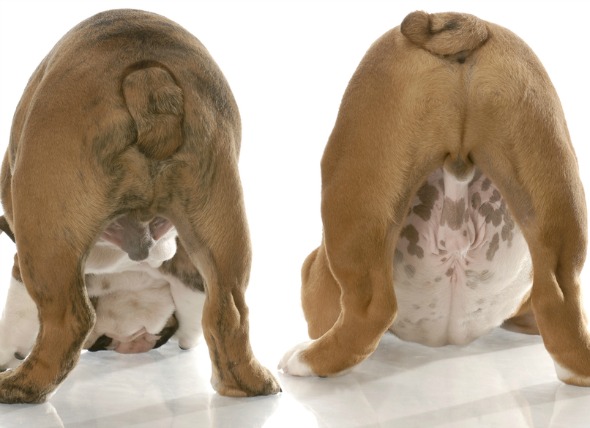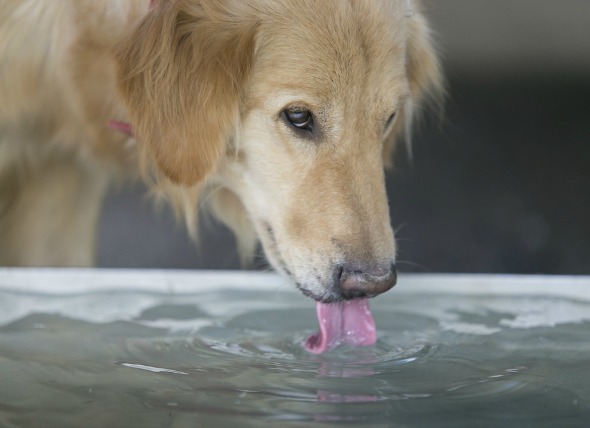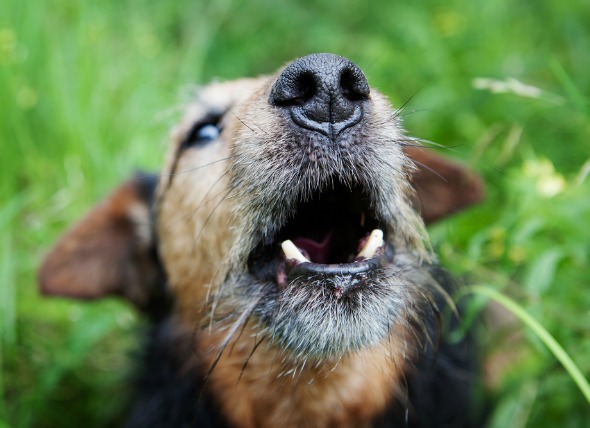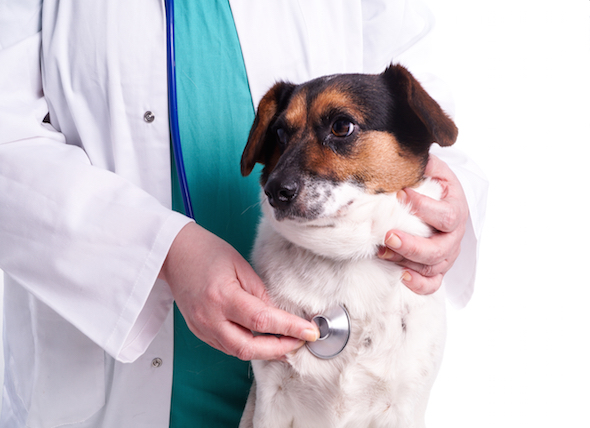

Dogs have anal sacs on either side of the anus which fill with fluid produced by the anal glands. This fluid is assumed to be a scent marker useful for delineating territory. Anal sac disorders involve impaction of anal sac fluid, inflammation of the sac(s), and abscess of the sac(s), which can lead to anal gland rupture. Impaction is the most common disorder of the anal glands. Small breed dogs like Miniature Poodles, Toy Poodles, and Chihuahuas are more predisposed than other breeds.
Your veterinarian will conduct a complete physical exam on your dog, into account the background history of symptoms and possible incidents that might have precipitated this condition. You will need to give a thorough history of your dog's health, onset of symptoms, and possible incidents that might have led to this condition. Your veterinarian will order a blood chemical profile, a complete blood count, an electrolyte panel and a urinalysis to rule out other causes of disease.
The sacs are considered enlarged if during the physical exam, the anal sacs are easily palpable. The normal clear or pale yellow-brown secretion will have turned to a thick, pasty brown fluid if the anal glands have been impacted. Abscessed anal sacs will have a red-brown exudate, and show signs of swelling and redness. The anal sacs may also be clearly ruptured. The anal sac exudate will be sent to a laboratory for culture and sensitivity testing.
Your veterinarian will express the contents of the anal sacs if they are not already ruptured. Abscessed anal sacs will be opened in order to allow drainage. The anal sacs will then be cleaned and flushed, and antibiotics will be infused into them. If your dog is suffering from chronic anal sac infection, the anal sacs may need to be surgically removed. However, if your dog is suffering from severe fistulation (abnormal openings in the anal sacs), it may benefit from oral cyclosporine therapy.
Your veterinarian will schedule a follow-up appointment 3 to 7 days after diagnosing and beginning treatment for you dog. Your veterinarian will schedule subsequent follow-up appointments as necessary to treat your dog's condition. If your dog is constantly licking at its anus after treatment, you will need to ask your veterinarian for an Elizabethan collar to prevent the dog from reaching its anus. Also, contact your veterinarian for further treatment if the anal glands continue to drain after a few days of treatment, or if they appear to be red and swollen.
 Leukemia (Chronic) in Dogs
Chronic Lymphocytic Cancer in Dogs
Chronic lympho
Leukemia (Chronic) in Dogs
Chronic Lymphocytic Cancer in Dogs
Chronic lympho
 Thyroid Cancer (Adenocarcinoma) in Dogs
Thyroid Gland Adenocarcinoma in Dogs
The thyroid
Thyroid Cancer (Adenocarcinoma) in Dogs
Thyroid Gland Adenocarcinoma in Dogs
The thyroid
 Failure to Absorb Vitamin B12 in Dogs
Cobalamin Malabsorption
Cobalamin malabsorption r
Failure to Absorb Vitamin B12 in Dogs
Cobalamin Malabsorption
Cobalamin malabsorption r
 Collection of Fluid in the Lungs (Not Due to Heart Disease) in Dogs
Noncardiogenic Pulmonary Edema in Dogs
Nonc
Collection of Fluid in the Lungs (Not Due to Heart Disease) in Dogs
Noncardiogenic Pulmonary Edema in Dogs
Nonc
 Lymph Node Inflammation (Lymphadenopathy) in Dogs
Lymphadenopathy in Dogs
Lymph nodes (or glands),
Lymph Node Inflammation (Lymphadenopathy) in Dogs
Lymphadenopathy in Dogs
Lymph nodes (or glands),
Copyright © 2005-2016 Pet Information All Rights Reserved
Contact us: www162date@outlook.com